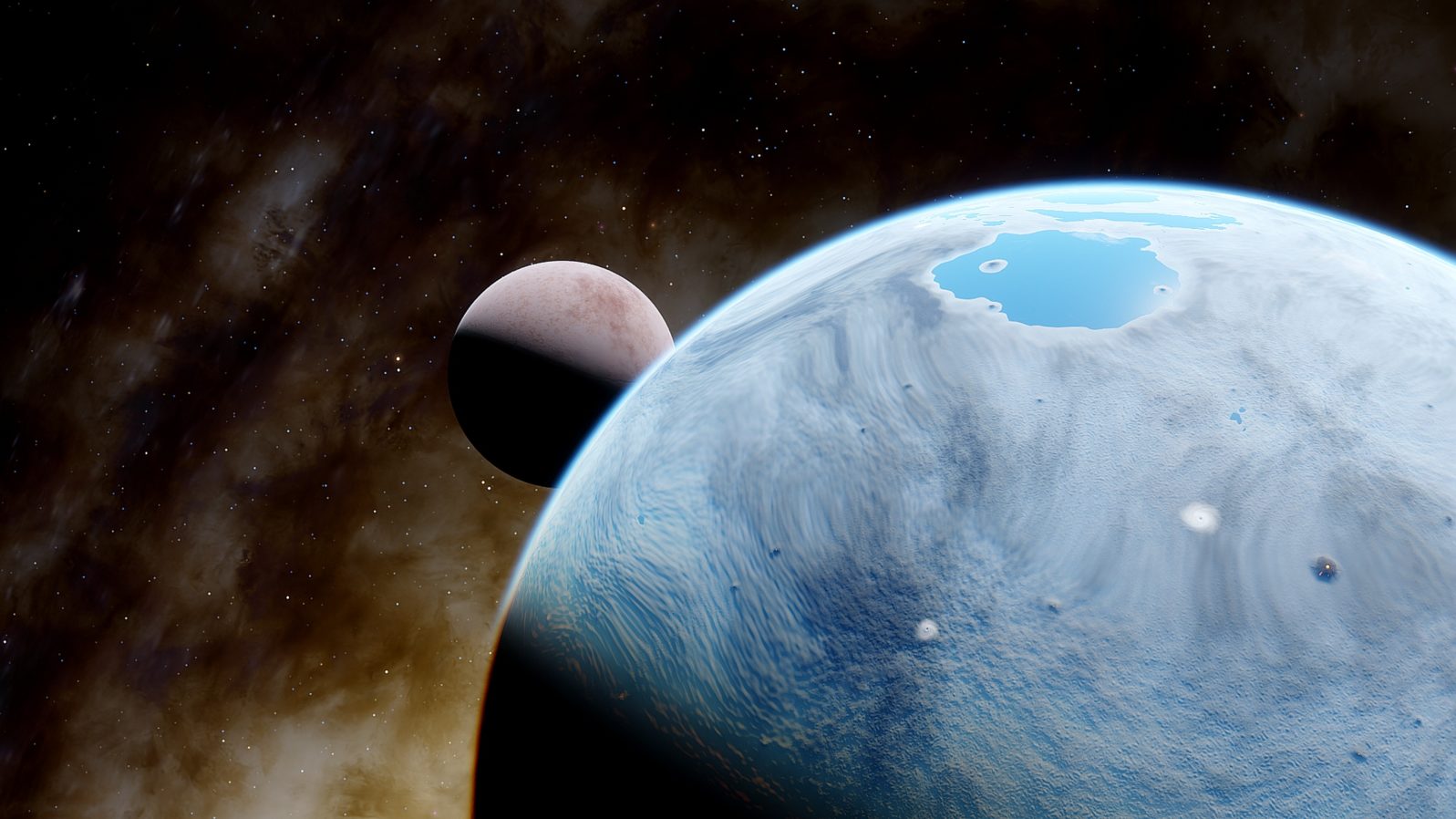News From the Search for Extraterrestrial Life I
Super-Earths that might have life, choosing life forms to take to Mars, and self-replicating robots…A roundup from popular science news sources:
★ Are any super-Earths habitable? The largest single class of exoplanets discovered are super-Earths — bigger than Earth but smaller than Neptune, of which there are 1,577 confirmed discoveries. Some lie within the habitable zones — at least in principle — of their stars. Stony Brook astrophysicist Paul Sutter ponders the factors that go into determining how many of them are actually habitable, concluding,
Perhaps the best candidate for a habitable super-Earth is LHS 1140b, which orbits a red dwarf star about 49 light-years from Earth. It’s about 60% wider than our planet but 6.48 times as massive. It orbits extremely close to its parent star — its orbital period is just 25 days — but since the star is a cool red dwarf, this is comfortably within the habitable zone.
Atmospheric models of LHS 1140b allow for the possibility of a thick atmosphere hugging a world with oceans of liquid water.
Paul Sutter, “Just how big can a super-Earth get while staying ‘habitable’?” at Space.com (August 4, 2022)
★ NASA is looking at developing a swarm of tiny robots to look for extraterrestrial life: Called Sensing With Independent Micro-Swimmers (SWIM), they’ll focus for now on “so-called “Ocean Worlds” — ice-covered satellites like Europa or Enceladus that are thought to host liquid water beneath their frozen crust.” (ZME Science)
★ Speaking of probes, a recent article at Universe Today looks at current research into self-replicating probes. Probes intended for destinations light years away would need to be self-replicating and “We’re reasonably certain that other solar systems have asteroid belts. In our Solar System, asteroid mining is expected to be a big part of our expansion into space. So self-replicating interstellar probes will likely rely on asteroids for raw materials.” (Evan Gough, July 19, 2022) The method of choice would be 3-D printing which has seen considerable advances:
★ Also at Universe Today, what life form would be your best partner for living on Mars? … cyanobacteria! Yuck, you say? Well, “In particular, cyanobacteria’s photosynthetic abilities, nitrogen-fixing activities, and lithotrophic features (using minerals for biological processes) could be used to provide for the everyday needs of astronauts. In terms of resources, Mars’ atmosphere is 95% CO2 and 3% nitrogen by volume, while its regolith is rich in iron and other useful minerals. From these, certain species of cyanobacteria could produce oxygen gas and biomass that could serve various purposes – including food production.” (Matt Williams, August 18, 2022)
Here’s where we are with that as of February 2021:
★ Well, crabs are back in the news again. Crabs? Okay, carcinization. A surprising number of life forms on Earth, over many millions of years, ended up looking like crabs though they actually aren’t crabs. At Discover Magazine, Jason P. Dinh points out that “Crab-like body plans have evolved independently at least five times.” Finding patterns like this of convergent evolution in the development of life forms might help with predictions of what to expect where on exoplanets.
Anyway — in a world where Stephen Jay Gould insisted that evolution would never play the same tape twice, paleontologists would like to know why:
Shortening and widening the body stabilizes their stance. That could allow for the sideways walking the group is famous for and help them invade dry land.
Crabbiness could also stave off predation; the crustaceans tuck their scrumptious tail under a protective shell, and can squeeze their disc-like bodies into narrow cracks. The reverse seems true, too. Species that avoid predation by other means, such as by co-opting snail shells or burrowing, often lose crab-like body plans or never evolve them in the first place.
Jason P. Dinh, “Evolution Only Thinks About One Thing, and It’s Crabs” at Discover Magazine (August 12, 2022)
Decarcinization is also frequent. It has happened at least seven times. One such extinct life form has been called the Baby Yoda of crabs. Dinh suggests, “Perhaps crabs gain and lose their form so frequently because they can flexibly time when and if to metamorphose.”
A universe that appears fine-tuned for life, as our does, is bound to be fun exploring. Here’s a fine-tuning fact for the week:
Take, for instance, the neutron. It is 1.00137841870 times heavier than the proton, which is what allows it to decay into a proton, electron and neutrino—a process that determined the relative abundances of hydrogen and helium after the big bang and gave us a universe dominated by hydrogen. If the neutron-to-proton mass ratio were even slightly different, we would be living in a very different universe: one, perhaps, with far too much helium, in which stars would have burned out too quickly for life to evolve, or one in which protons decayed into neutrons rather than the other way around, leaving the universe without atoms. So, in fact, we wouldn’t be living here at all—we wouldn’t exist.
Anil Ananthaswamy, “Is the Universe Fine-Tuned for Life?” at NOVA (March 7, 2012)
You may also wish to read: Earth’s weirdest life forms show that ET life is possible. Whether it’s living in boiling water, breathing sulfur, or eating radium, we’ve found life forms that do just that right here on Earth. Life seems to want to come into existence any way it can.
